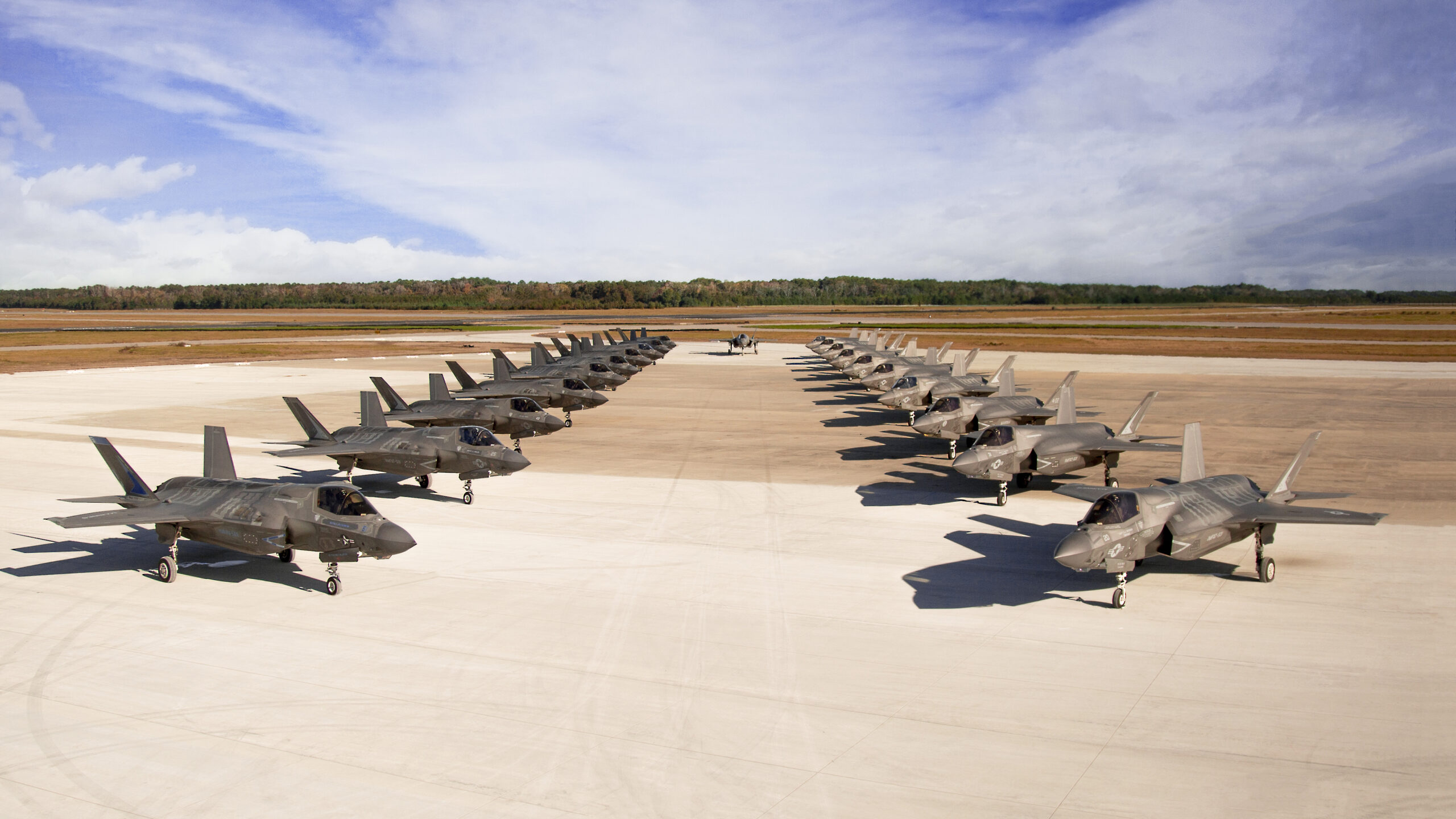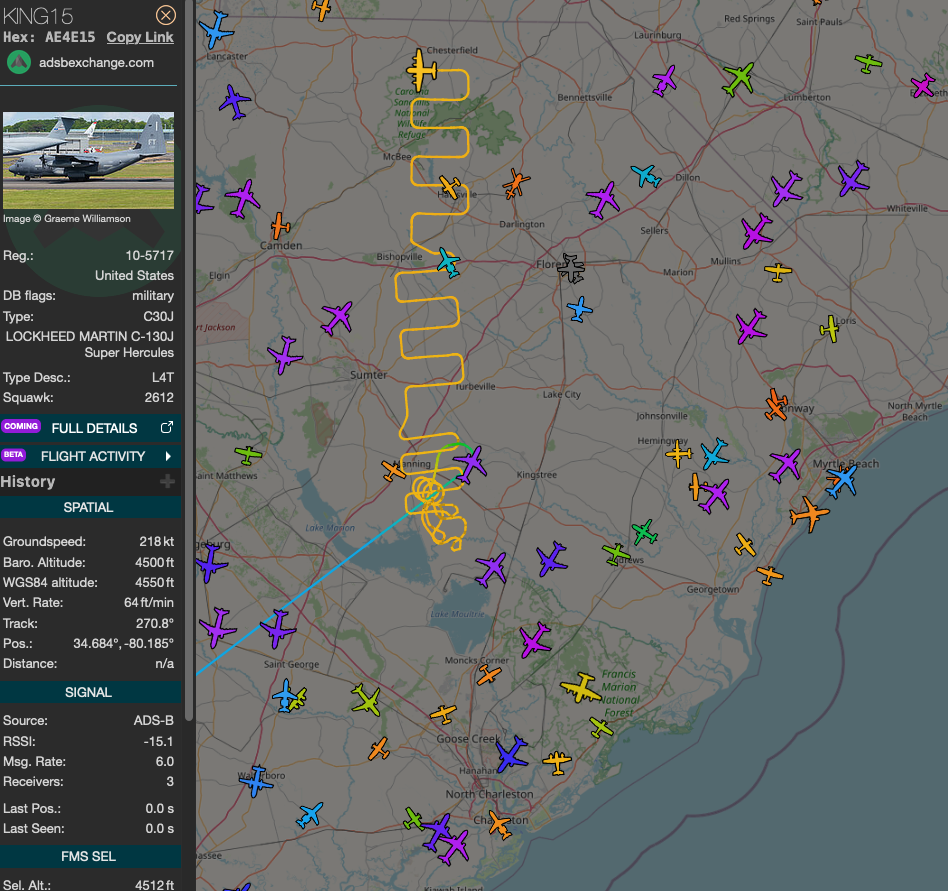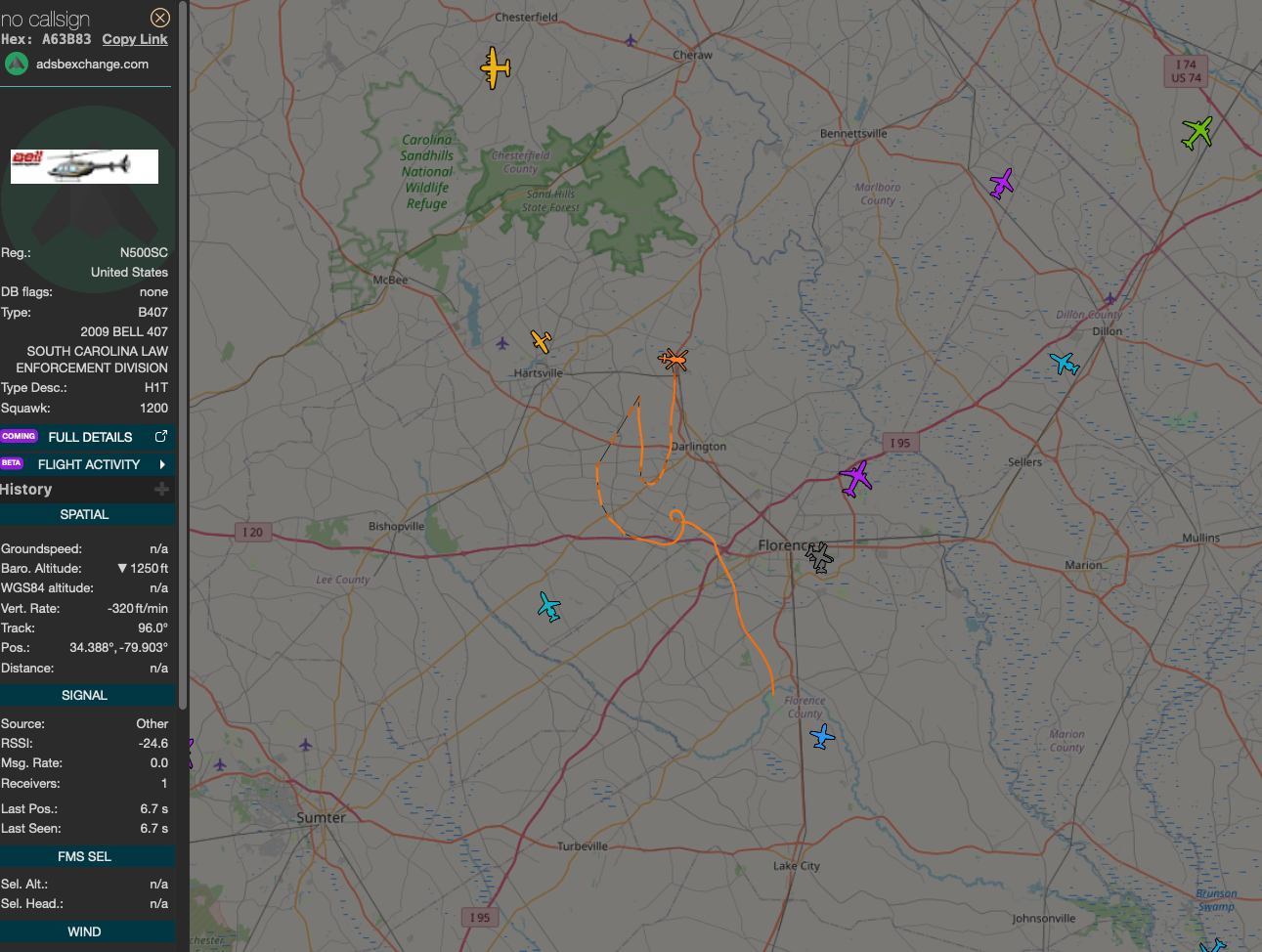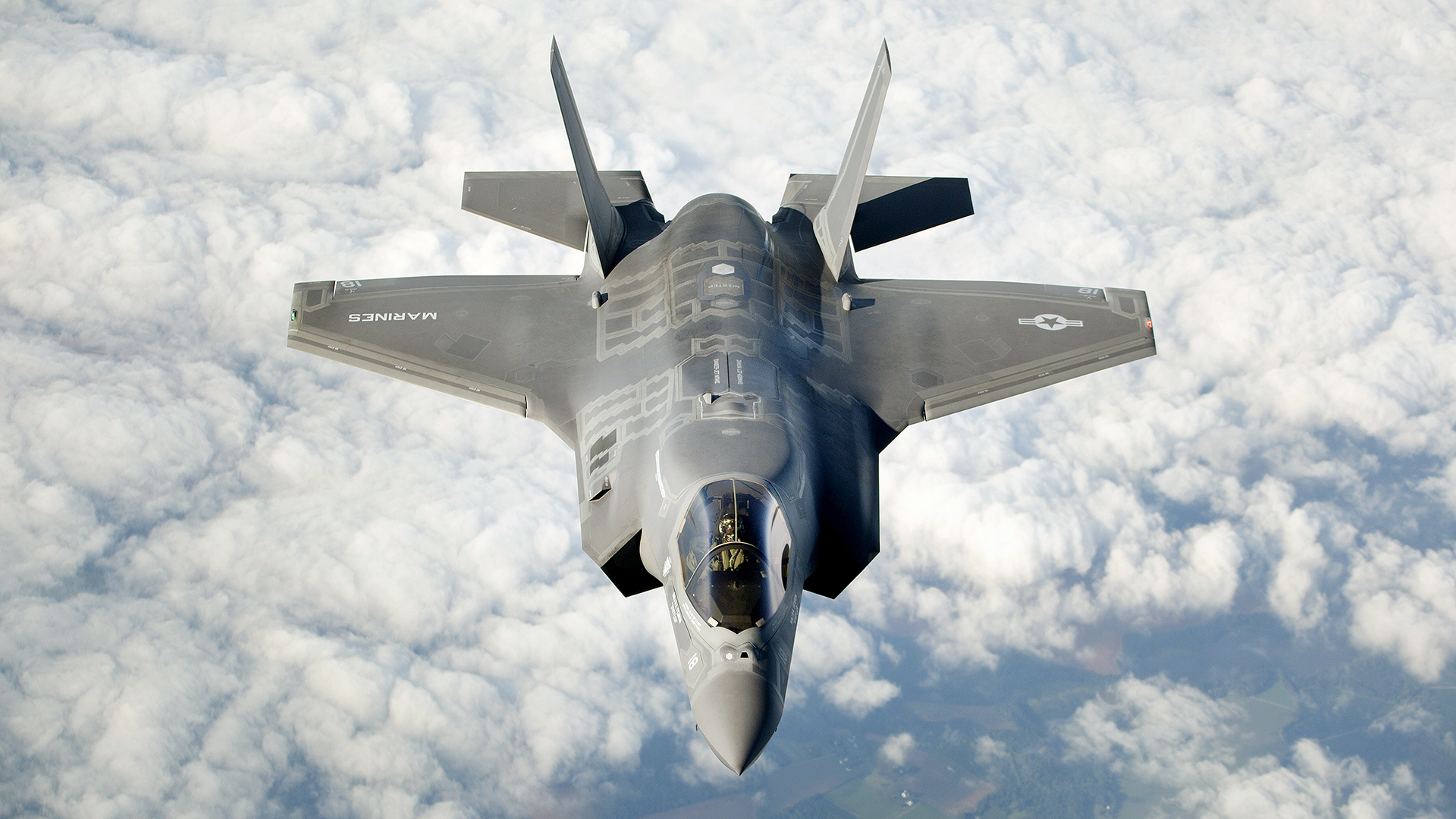A strange situation is unfolding in South Carolina. An F-35B pilot ejected from their aircraft today around 2:00 PM local time in an area north of Joint-Base Charleston. The pilot landed under a parachute in a Charleston neighborhood and is in stable condition, but the advanced stealth fighter they ejected from is nowhere to be found.
The F-35B originated from Marine Corps Air Station Beaufort, a master F-35B base for the USMC. It was part of a two-ship flight, with the other F-35B landing safely at MCAS Beaufort. There is no information on what led up to the ejection. Based on FAA data, the search for the aircraft is underway in the Lake Moultrie and Lake Marion areas, Senior Master Sergeant Heather Stanton from Joint Base Charleston told the press. But here’s the kicker: the DoD is saying the F-35B was put on autopilot prior to the ejection.

While it sounds totally bizarre, fighter aircraft continuing on their way in a ‘zombie state’ for prolonged periods, and even coming to rest on the ground intact, long after their pilot left the cockpit, is not unheard of. The most famous instance of just such a situation was the “Cornfield Bomber,” an F-106 Delta Dart that landed on its belly in one piece after its pilot punched out back in 1970.

A Soviet MiG-23 flew all the way from Poland to Belgium without its pilot after they ejected from the jet shortly after takeoff back in 1988.
Another example that has occurred during Navy carrier ops is where aircrew ejected as their jet entered a stall state due to a ‘cold cat shot’ or engine issues while heavily laden at the start of their mission. The loss of the weight of the crew, seats, and canopy, as well as the shift in the center of gravity, have seen aircraft pull out of an imminent crash with nobody left onboard.
As for this incident, even the shorter-ranged F-35B has considerable reach. On autopilot, it could have flown hundreds of miles before crashing, depending on its fuel state. We saw a similar situation with the non-responsive Citation bizjet last June, although the crew and passengers remained onboard that stricken aircraft.

The fact that the F-35 disappeared without any reports of a crash points to the likelihood that it went down in a sparsely populated area. If it ran out of fuel, there would not likely be a big fire and no massive fireball for people to spot, nor as loud of a crash. If it went down in the Atlantic, it could make finding it even harder. Also, the jet’s configuration and its avionics’ operability are an issue. The F-35s wear radar reflectors when on transit flights, as well as on many training missions and some operational ones. The Marine jets often wear missile rails for AIM-9Xs, as well. But if the aircraft was in its full stealthy configuration and had avionics issues, tracking it may have been troublesome.
We will keep you updated as this story unfolds.
UPDATE: 6:15 AM EST—
The Washington Post has comment from Joint Base Charleston that the jet’s transponder was not working at the time of the incident. They wouldn’t give any information on the type of sortie the jet was on at the time of the incident. From the article:
“The jet’s transponder, which usually helps locate the aircraft, was not working “for some reason that we haven’t yet determined,” said Jeremy Huggins, a spokesman at Joint Base Charleston. “So that’s why we put out the public request for help.”
In an appeal posted to social media, Joint Base Charleston asked the public to contact the base if anyone had information about the aircraft’s whereabouts following the “mishap” on Sunday.”
…
“He added in a text message late Sunday that teams were still searching for the plane. He declined to specify the nature of the exercise that the pilot was involved in at the time of the incident.”
We discussed earlier how both of those variables — the state of the aircraft’s avionics and what kind of mission it is on and its configuration — could have impacted the ability to track it. Considering how sensitive so much of that aircraft is and how toxic the materials that make up its structure can be, especially if burned, finding it is of great importance.
UPDATE: 7:00 AM EST—
Joint Base Charleston putting out a request to the public to help find the missing stealth jet has led to surprise in some quarters, but also criticism.
Nancy Mace, the U.S. representative for South Carolina’s 1st congressional district tweeted: “How in the hell do you lose an F-35? How is there not a tracking device and we’re asking the public to what, find a jet and turn it in?”
While we now know the transponder on the jet in question was not working, the incident is, perhaps not surprisingly, fast becoming an internet meme de jour.
UPDATE: 1:40 PM EST—
We may have our first clear indication of at least one direction where the DoD thinks the missing F-35 may have flown. An Air Force Special Operations Command HC-130J combat search and rescue Hercules is flying a search pattern extending from north of Lake Marion up to just over the North Carolina border. Its search is ongoing at this time.
The HC-130J and their specialized crews are extremely capable when it comes to this type of mission and the aircraft carries an electro-optical/infrared sensor turret to aid in checking out areas of interest below.

There is also a state police helicopter that appears to be part of the search:

Joint Base Charleston took to Twitter again to state that the search continues and to list some of the entities taking part in the mission, which include the Navy and Civil Air Patrol, as well as law enforcement at many levels.
UPDATE: 2:23 PM EST—
Additional aircraft are searching to the northwest of lakes, these include a Cessna 182 with the Civil Air Patrol and a DoD King Air 200:
UPDATE: 7:00 PM EST—
The U.S. Marine Corps has now announced a safety stand-down for its entire aviation fleet, after a spate of three Class-A aviation mishaps over the last six weeks. According to a media release from the service, the Acting Commandant of the Marine Corps, Gen. Eric M. Smith, has directed all Marine Corps aviation units to conduct a two-day pause in operations this week to discuss aviation safety matters and best practices.
The media release further states:
“During the safety stand-down, aviation commanders will lead discussions with their Marines focusing on the fundamentals of safe flight operations, ground safety, maintenance, and flight procedures, and maintaining combat readiness. This stand-down is being taken to ensure the service is maintaining operational standardization of combat-ready aircraft with well-prepared pilots and crews.”
“This pause invests time and energy in reinforcing the Marine aviation community’s established policies, practices, and procedures in the interests of public safety, protecting our Marines and sailors, and ensuring the Marine Corps remains a ready and highly-trained fighting force.”
A safety stand-down of this kind is hardly unprecedented, although often they will be restricted to certain aircraft types or models. In fact, while some of the reporting around the stand-down has been sensationalist, the idea of each flying unit in the Marine Corps taking two days in the next week to review best practices is hardly that surprising, given the context.
As regards the F-35B incident, in particular, The War Zone reached out to the Joint Program Office, who provided us with the following statement:
“From JPO: “There is nothing more important than the health and wellness of the pilot involved. Our team will work with the USMC, industry, and all other stakeholders, to assist in the investigation efforts.”
The manufacturer of the missing F-35B, Lockheed Martin, also provided The War Zone with the following comment:
“We are aware of the mishap involving an F-35B from Marine Corps Air Station Beaufort and are thankful the pilot ejected safely. We are supporting the government’s investigation.”
We have ended our updates to this story. Our continuing coverage of this incident can be found here.
Contact the editor: Tyler@thedrive.com
